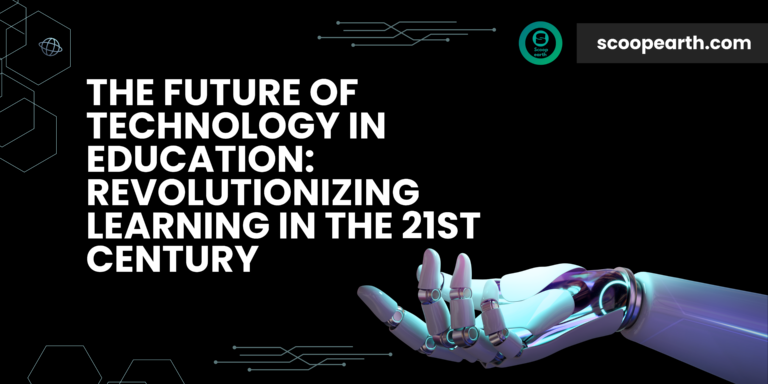The integration of technology in education has been a transformative force, reshaping traditional tutoring and literacy styles. As we stand on the point of the third decade of the 21st century, the future of technology in education pledges to usher in a new period of substantiated, interactive, and accessible literacy gests. In this essay, we will explore the crucial trends, challenges, and implicit benefits associated with the future of technology in education.
Current Landscape of Technology in Education
Before probing into the future, it’s essential to understand the current geography of technology in education. Over the once decade, classrooms worldwide have witnessed the infusion of digital tools, online coffers, and interactive platforms. Learning Management Systems(LMS), virtual classrooms, and educational apps have become commonplace, creating a more dynamic and engaging literacy terrain. Still, these advancements are only the tip of the iceberg when it comes to the implicit impact of technology on education.
Crucial Trends Shaping the Future
Artificial Intelligence(AI) and Machine literacy(ML)
- AI and ML are poised to revise education by furnishing substantiated literacy gests.
- Adaptive literacy platforms can dissect scholars’ strengths and sins, acclimatizing educational content to individual requirements.
- Intelligent training systems powered by AI can offer real-time feedback, fostering a more interactive and responsive literacy terrain.
Virtual and Augmented Reality (VR/ AR)
- VR and AR technologies have the eventuality to transport scholars beyond the confines of the traditional classroom.
- Immersive guests can enhance literacy in subjects similar to history, wisdom, and terrain. Virtual laboratories allow scholars to conduct trials in a threat-free terrain, fostering a deeper understanding of scientific generalities.
Blockchain Technology
- Blockchain can revise the credentialing system by furnishing secure and transparent verification of academic qualifications.
- This decentralized approach to record-keeping ensures the integrity of educational credentials.
Internet of Things (IOT)
- IOT can produce smart classrooms where connected bias enhances the literacy experience. From smart whiteboards to wearable bias tracking scholars’ progress, IOT can produce a more interactive and data-driven educational terrain.
Gamification and Edutainment
Gamification rudiments, similar to colophons and prices, can motivate scholars and make literacy more pleasurable. Educational games and interactive simulations can turn complex subjects into engaging guests.
Online literacy Platforms and Massive Open Online Courses(MOOCs)
- The fashionability of online literacy platforms and MOOCs has surged in recent times, furnishing accessible and flexible education options.
- These platforms homogenize education, reaching learners worldwide irrespective of geographical boundaries.
Implicit Benefits of Future Technologies in Education
Individualized literacy Technology
- This enables adaptive literacy platforms to knit educational content grounded on scholars’ individual literacy styles and pace.
- This substantiated approach caters to different requirements, fostering a deeper understanding of subjects.
Availability and Inclusivity
- Unborn technologies have the eventuality to break down walls to education, making it more accessible for individuals with disabilities.
- AI-powered assistive technologies can give real-time support to scholars with different literacy requirements.
Global Collaboration
- Virtual classrooms and online collaboration tools grease global connectivity, allowing scholars from different corridors of the world to unite on systems, share perspectives, and learn from each other.
Enhanced Engagement
- The integration of interactive technologies, similar to VR and gamification, can significantly enhance pupil engagement.
- Immersive gests and interactive content prisoner scholars’ attention and make literacy more pleasurable.
Effective Assessment and Feedback
- Technology streamlines the assessment process through automated grading systems and data analytics. preceptors can give timely and targeted feedback, enabling scholars to track their progress and areas for enhancement.
Challenges and Considerations
Digital Divide
Despite the implicit benefits, the digital peak remains a significant challenge. Socioeconomic differences can limit access to technology, creating injuries in educational openings.
sequestration and Security Enterprises
The collection and storehouse of vast quantities of pupil data raise enterprises about sequestration and security. Striking a balance between using data for substantiated literacy and securing individual sequestration is pivotal. schoolteacher
Training and Professional Development
The successful integration of technology in education requires preceptors to be complete in using these tools. Ongoing professional development is essential to empower preceptors with the chops demanded to work technology effectively.
Overreliance on Technology
While technology can enhance literacy, an overreliance on digital tools may compromise essential aspects of education, such as critical thinking, creativity, and interpersonal chops.
For more Details Kindly Read: magnifierworld
Conclusion
The future of technology in education holds an immense pledge to transform the way we learn and educate. From AI-driven individualized literacy to immersive virtual guests, the geography of education is evolving fleetly. still, it’s pivotal to address the associated challenges, including the digital peak, sequestration enterprises, and the need for nonstop schoolteacher training.
As we embrace the possibilities that technology offers, it’s essential to maintain a balance that prioritizes inclusivity, availability, and the holistic development of learners. The future of education is really digital, but it’s the responsible and thoughtful integration of technology that will determine its true impact on shaping the minds of unborn generations.
Engineer | Content Writer
Want to be a catalyst for a positive change in the world
